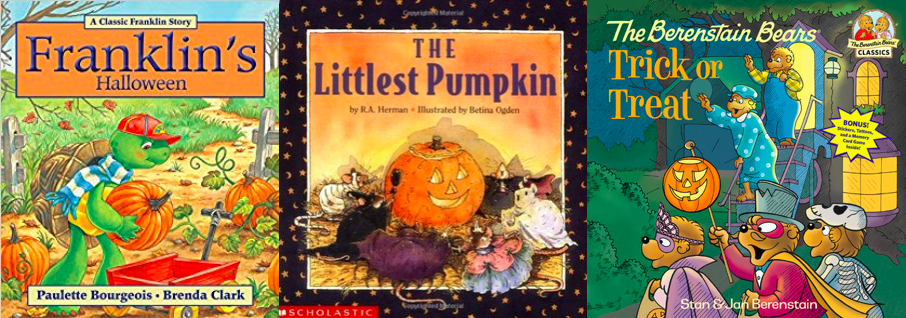Fall brings sweater weather, changing leaves, pumpkins, and holidays like Halloween. Although trick or treating is not a mandatory childhood experience, many families would like to share this experience with their child and enjoy memories created as a family. Children with anxiety, autism, and/or other challenges may find it difficult to participate in this event.
Anxiety
Halloween fears are not usual for children under 6. Children develop their ability to tell the difference between reality and fantasy between ages 3 and 5 years.
Autism
Children with autism may present with a variety of challenges with sensory processing, social skills, attention, communication challenges, and/or motor delays.
Although anxiety and autism are focused on in this article, these tips may be used for so many other children with or without challenges.
Preparation
Read books:
- The language and visual aspects of reading together can be a powerful tool.
- Create a personalized social story or download one outlining your events of the evening. This is a good opportunity to establish rules.
- Here are a few classic stories about Halloween to introduce the idea of Halloween to your child:

Conversations:
- Simply talking with your child about Halloween can alleviate some uncertainty.
- Ask them questions about why they are fearful.
- Watch videos of children trick or treating.
- Avoid painting a picture of "good" or "bad". Just state the facts.
- "Children will wear costumes"
- "We will visit grandma's house"
- "There will be games at the Halloween party"
- Reassure your child they are safe.
- Set any rules or guidelines they must follow ahead of time.
- Masks:
- Children may have aversions to the sensation of wearing something on their face.
- Having them responsibly play with make-up could decrease some sensitivity on their face.
- When other people wear masks, it blocks their facial expressions and this might be disorienting to children.
- Have them play with a pleasant looking mask in front of a mirror.
- Consider the fabric of the costume. Will it be comfortable? Warm? Regular clothing can be transformed into a costume.
- Have the child make their own costume for their dolls and dress them up. Aluminum foil, old socks, and paper can be used.
- Have your child wear sneakers that light up or a glow stick if they are an eloper.
- Try on costumes a few days in advanced.
- Arrange to practice visiting a neighbor of friend's house.
- Walk the route around the neighborhood they'll be trick or treating the weekend before.
- Make a candy plan with your child ahead of time of what they can do with the candy when they get home. Can they dump it all out and eat immediately? Are they allow a certain quantity that night and save the rest?
- Look for houses with a teal pumpkin on their porch, these houses offer non-food treats. Plan your route around them ahead time.
- Look for events that are allergy friendly.
- Drop off a package of allergy approved treats to our neighbors ahead of time.
- Set up a candy exchange at home.
- Exchange non-approved candy for allergy approved candy from home.
- Can they swap with a sibling?
- Exchange candy for money. 1 Candy = 10 cents
- Prepare them ahead of time that this is the plan!
- Despite the preparation and planning, Halloween parties or trick or treating may not be something your child will enjoy. It doesn't mean it will always be this way
- Coloring Halloween coloring pages.
- Watching a Halloween or their favorite movie.
- Pumpkin carving. View Safety Tips.
Halloween Day
- "When we have to go, you might feel mad or disappointed. That is ok to feel this way. It is not ok to run away or stay longer because you feel this way"
- "I see you're trying to hide. You seem scared. Let's talk about it."
- "We will go to 3 houses"
- "We will stay for 30 minutes"
